| Satin stitches | Language | Drawn thread work | Pulled thread work |
| German | Wickelstich | Wickelstich; Kordonnierstich |
|
| English | Satin stitch | Satin stitch | |
| French | Point enroule; cordonnet | Point enroule | |
| Portugese | Fios enrolados | Ponto de fundo | |
| Italian | Punto cordoncino | Punto rodi; Punto piatto | |
| Danish | Kastning | Kastning |
Satin stitch patterns – in contrast to other filling patterns – are worked fast and easily.
There is a wide variety of Satin stitch patterns that can achieve very different and pleasing effects.
Satin stitches are not only suitable as drawn thread patterns in Schwalm Whitework, they are also applicable in pulled thread work where they would be worked without removing ground fabric threads.
I worked different tea cloths and doilies using only such Satin stitch patterns. The following examples should show you, how attractive Satin stitch patterns appear.
I have also decorated some samplers and pillowcases with such Satin stitch patterns.
I worked additional embroidered pieces which, although they are not Schwalm Whitework, show excellently the Satin stitch patterns.
Did those examples show you the variety and the
interesting effects achieved by using Satin stitch patterns?
Are you interested in stitching such beautiful and easy to work filling patterns yourself?
Then my edition
“Wickelstiche I” can help.
In the book you can find 85 different patterns in all – perhaps some of them you already know, such as the “2-pattern”. But there are many, many new patterns besides.
Each pattern was worked on 14 threads per cm linen and is pictured in original size. In addition is a close-up image where each single stitch can be seen clearly.
The order of working is shown in at least two, often more, step-by-step pictures and described with a short text.
And in the end it is noted how long I worked to finish a pattern. So one can see, which pattern is faster to work and which need some more time.
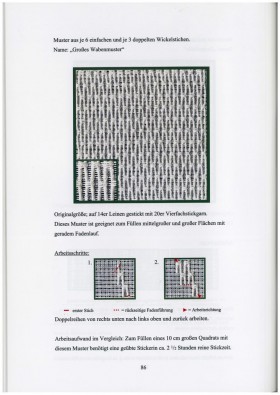
Wickelstiche page 86 (more examples are in the Shop)
All 85 pattern pages in the book have the same format. You can see an example of another pattern page in “shop”. There you can also find the complete table of contents.
On pages 2–8 you will find important hints for efficient working and some tips, along with clear photos. The text in the book is German, but there are both an English and a French leaflet.
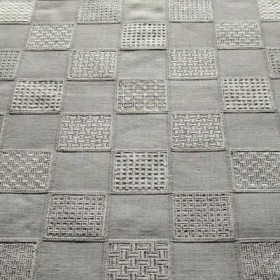
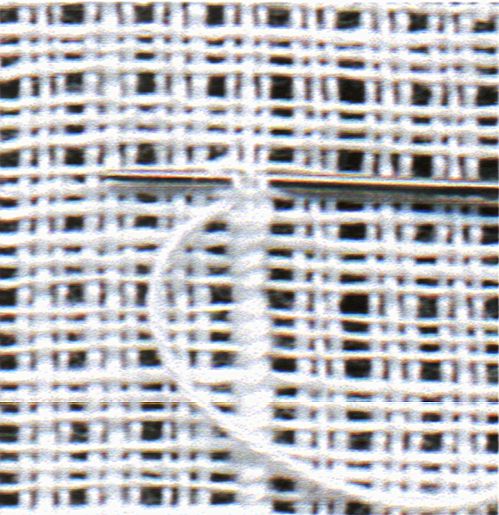
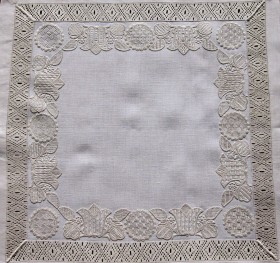
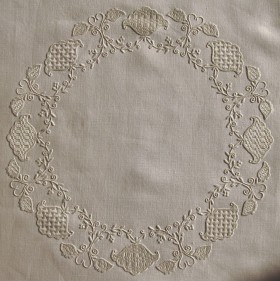
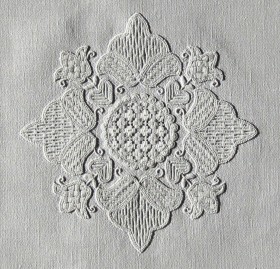
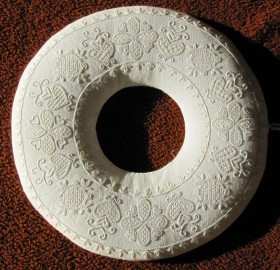
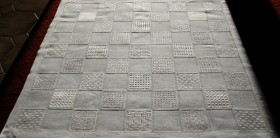
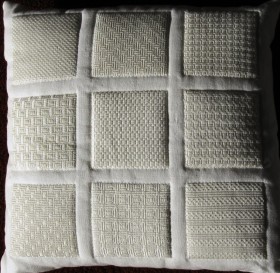
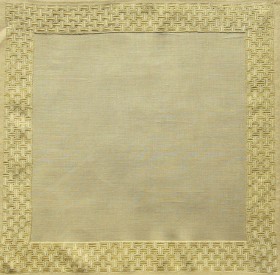
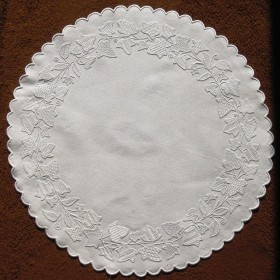
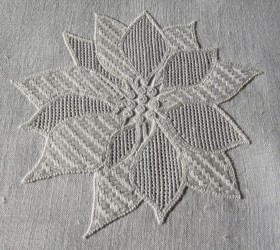


Doskonała strona, wiele przydatnych informacji i wskazówek. Polecam.